Temple Huibangsa
8.8Km 2020-04-27
1-1, Sucheol-ri, Punggi-eup, Yeongju-si, Gyeongsangbuk-do
+82-54-638-2400
Le temple Huibangsa se trouve à 4 km au Nord-Est de la gare de Huinang, au pied du mont Sobaeksan à 850 m d’altitude. Le temple a été construit par le grand moine Suwun en l’an 643, durant la 12ème année du règne de la reine Seondeok à l’époque Shilla. Le temple possédait autrefois des blocs d’impression en bois des volumes 1 et 2 du Weolinseokbo (une biographie de Bouddha), mais ceux-ci furent détruits lorsque le temple brûla durant la Guerre de Corée. Récemment , les blocs de bois ont été recréés. L’entrée du temple est entourée par une jolie forêt envahie par des ombres envoûtantes lorsque les rayons du soleil atteignent les arbres. Non loin de là, on peut égalelement visiter la cascade de Huibang, haute de 28 m, qui est la plus grande chute d’eau de la région centrale de Corée.
* La cascade de Huibang
A 4 km au Nord-Est de la gare du temple Huibangsa (ligne Jungang) se trouve la cascade Huibang au pied du mont Sobaeksan. La cascade se trouve sur le chemin du pic Yeonhwabong (1 383 m d’altitude), et c’est la plus grande de la région. La cascade est située dans une vallée recouverte d’arbres et de rochers, et surplombe le temple Huibangsa récemment restauré. Dans les environs se trouve également le temple Buseoksa et l’académie confucéenne de Sosuseowon située le long du circuit de randonnée du mont Sobaeksan.
La Forêt Oknyeobong de Sobaeksan (소백산 옥녀봉자연휴양림)
11.9Km 2016-09-05
124, Therapy-ro, Bonghyeon-myeon, Yeongju-si, Gyeongsangbuk-do
+82-54-639-7490~3
La forêt Sobaeksan est située sur le mont. Sobaeksan, un endroit idéal pour se détendre avec de magnifiques sentiers forestiers. Elle a aussi été rendue célèbre pour organizer le “festival des azalées royales de Sobaeksan“. Les installations comprennent des bungalows, une cuisine communautaire, des douches, une salle de classe en plein air et une aire de stationnement.
La forêt bénéficie d’une vue imprenable du mont. Sobaeksan sur Gukmangbong, Birobong et le pic Dosolbong. Les attractions voisines comprennent le temple Buseoksa, l’école confucéenne Sosuseowon et la vallée Huibang.
Grotte Cheondong (천동동굴)
12.9Km 2020-01-02
17-1, Cheondong-ri, Danyang-eup, Danyang-gun, Chungcheongbuk-do
+82-43-422-2972
Située à la lisière de la montagne derrière Cheondong-ri (Danyang), la Mine de Cheondong est une mine de calcaire de 470m de long. Formée il y a 450 millions d’années, elle est connue pour avoir de splendides roches de calcaire appelées « plateaux de fleurs ». Elle est décorée de nombreux stalagtites et stalagmites, de colonnes et d’autres, comme s’ils faisaient partie d’une forêt luxuriante. D’abondants dépôts d’origine animale font de la mine une énorme galerie de spécimens.
Bien qu’il s’agisse d’une mine petite et à part, Cheondong peut se vanter d’avoir un grand nombre d’atouts naturels splendides. Avec la Mine de Gosu (Monument naturel numéro 256) située à Gosu-ri (Danyang), celle de Cheondong est considérée comme l’une des plus belles mines de calcaire de Corée.
Temple Guinsa (구인사)
12.9Km 2021-10-12
73, Guinsa-gil, Yeongchun-myeon, Dannyang-gun, Chungcheongbuk-do
Le temple Guinsa est le siège des bouddhistes coréens de l’ordre Cheontae, dirigeant plus de 140 temples dans le pays. Etablit en 1945, le temple fut rénové en 1966 afin de créer une structure d’encadrement complète, unique et moderne. Le temple Guinsa, situé en contrebas du pic Yeonhwabong du mont Sobaeksan, fut fondé par le moine Sangwol Wongak qui créa une petite maison avec du vin arrowroot (plus connu sous le nom de « dictame » ou « herbes aux flèches ») afin de pratiquer l’ascétisme. Situé sur un terrain de 15 014 m2 au total, ce temple de grande échelle abrite un sanctuaire haut de 5 étages ainsi que plus de 50 chambres. Il inclut également d’autres immeubles de style moderne pouvant recevoir plus de 10 000 visiteurs.
Le temple Guinsa compoprte deux points de visite à ne pas manquer sur place. Le premier est le hall Deabeopdang (le sanctuaire principal) et le second désigne le monument Beobeobi (un monument de sermons bouddhistes). Le hall Daebeopdang, le plus grand du genre en Corée et établit le 29 avril 1980, désigne un bâtiment de 5 étages pouvant abriter plus de 5 000 personnes. Beobeobi (nom complet : Beobeobi du grand moine Sangwol) désigne un monument de pierre au sein duquel les enseignements bouddhistes et les discours du grand moine délivrés aux élèves sont rassemblés et gravés. Les écritures sur le document reflètent la vérité prêchée dans le ‘Tripitaka Koreana’, contenant les principes les plus essentiels du bouddhisme.
Vallée de Darian (다리안계곡)
13.1Km 2021-05-17
528-10, Darian-ro, Danyang-gun, Chungcheongbuk-do
+82-43-423-1146
La légende raconte qu’un dragon a pris son envol vers le ciel depuis la vallée de Darian. La vallée de Darian tient son nom de la vue théâtrale des chutes d’eau passant sous un pont. Prenant sa source au pic de Biro dans la montagne Sobaeksan, l’eau s’écoule à travers la vallée de Darian, Cheongdong, Geumgok, et la cave de Gosu Donggul.
L’eau pure et glacée tourbillonne à travers les rochers aux formes curieuses de la vallée, entourée par une profusion d’arbres. C’est pour cette raison que la vallée est très populaire en été. La zone touristique de Darian, au centre de la vallée, attire des centaines de milliers de visiteurs venus admirer ses nombreux paysages. Des huttes, des terrains de camping, des barbecues et des sentiers de massage à base d’argile ont été aménagés pour le confort des familles et des randonneurs.
A proximité se trouvent la zone touristique de Cheondong (qui possède entre autres un terrain de camping caravaning, un terrain de golf et un parc aquatique), les sentiers de randonnée de la montagne Sobaeksan, Dodam Sambong et Seokmun (colonne de pierre en forme d’arc-en-ciel) qui forment l’un des huit paysages de Danyang, les cavernes de Gosu, Nodong et Cheondong, le studio de drama Ondal et la station de vacances forestière de Soseonam. Tous ces atouts font de Dangyang une destination à ne pas manquer.
Hamheung Myeonok (함흥면옥)
13.5Km 2016-09-05
109-10, Jungang-ro, Yeongju-si, Gyeongsangbuk-do
Hamheung Myeonok is a family operated business for three generations mainly serving ‘naengmyeon’ (cold noodles) and ‘galbi’ (grilled ribs).
A well-known place in Yeongju, Hamheung Myeonok offers the second floor especially for groups.
Cleanliness and hygiene are most emphasized by the owner.
Hand kneaded cold noodles are extra chewy and their North Korean style ‘bulgogi’ (marinated barbeque beef) are quite famous.
Also, try their ‘galbi Jjim’ (marinated and simmered ribs) which is combined with Korean herbal medicine providing a healthy dining choice for visitors.
Excellent service, atmosphere and food.
Overall a superb restaurant.
Temple Buseoksa [Patrimoine mondial de l'UNESCO] (부석사)
13.8Km 2020-06-17
345, Buseoksa-ro, Buseok-myeon, Yeongju-si, Gyeongsangbuk-do
+82-54-633-3464
Buseoksa est un temple très masculin. Contrairement aux autres temples coréens, sa dimension est importante, son architecture est plutôt simple et il offre une vue magnifique.
Le temple fut fondé en 676 par le moine Uisang (625-702) de Silla (B.C.57-A.D.935) sur l’ordre du roi Munmu (règne de 661 à 681), puis son hall principal Muryangsujeon(trésor national numéro 8) fut rénové à la 7ème année du règne (1016) du roi Hyeonjong (1010-1031) de la dynastie Goryeo par le moine Wonyoong(964~1053). Il fut rénové à plusieurs reprises plus tard.
La légende du moine Uisang et de la demoiselle Seonmyo, qui est rattachée à la construction de ce temple, est connue. La demoiselle Seonmyo, avec qui le moine Uisang fit la connaissance durant son séjour d’étude au Royaume des Tang, se jeta dans la mer à l’annonce de son départ et renaquit en dragon. Elle le suivit à Silla pour le protéger et fit flotter trois fois un rocher au-dessus du hall principal lors de sa construction pour le protéger des démons. D’où le nom du temple Buseok, le temple du rocher flottant. Ce rocher se trouve actuellement à gauche de ce hall.
On monte au temple de la porte d’entrée Cheonwang à la porte Anyang par 108 marches en pierre, qui symbolise la maîtrise des 108 angoisses de l’homme. Après la porte Ilju et Cheonwang se trouve la pagode à trois étages de Buseok. Vers le haut on voit le pavillon Beomjong. Plus haut encore, le pavillon Anyang qui signifie « l’entrée du paradis nous attend ». Après le pavillon Anyang, on arrive à Muryangsujeon, le hall principal du temple. Connu pour la beauté de ses lignes et de sa structure, il date de Goryeo et abrite un magnifique bouddha assis(trésor national numéro 45). Il contient plusieurs reliques et vestiges, à l’instar de Josadang, le deuxième vieux bâtiment du complexe (trésor national numéro 19)· la fresque de Josadang (trésor national numéro 46)· une lanterne de pierre en face du hall (trésor numéro 17).
Sogang House
14.6Km 2021-04-09
22, Baraemi-gil, Bonghwa-eup, Bonghwa-gun, Gyeongsangbuk-do
+82-10-9189-5578
The House of Sogang is an approximately 110-year-old house located in the village of Baraemi in Bonghwa-gun, Gyeongsangbuk-do. It was originally built for and presented to Kim Chang-gi (pen-name: Sogang), a well-known local Confucian scholar who served as the head of the Dosanseowon Confucian Academy, and who happened to be the second son of Kim Roe-sik (pen-name: Namho), the great-grandfather of the current owner.
Furthermore, the House of Namho, which is situated behind the House of Sogang, was built for the first son of Kim Roe-sik, one of the richest men in the region, who borrowed money using his entire property as security and donated it to a war chest. He won an official commendation for his role in helping secure national independence in 1977.
The entire village pf Baraemi is composed of traditional square-shaped houses with tiled roofs set amid a clean and peaceful atmosphere, for which it was designated as a Traditional Cultural Village way back in 1922. The name of the village, Baraemi, implies that it was originally situated by the sea, and many shell remains have been found in paddy fields and puddles there over the last 60 years.
The House of Namho is a typical square-shaped house with a tiled roof, and comprises a tall gate, a front courtyard, a sarangchae (men’s quarters) with maru (wooden floor), an inner courtyard, and a bonchae (main building) among its various structures. The main construction material of the house is Chunyang pine wood, which is a rarely used these days. Thanks to the owner-family’s dedicated maintenance and care, the house has been preserved in good condition. As the typical residence of a nobleman of the late Joseon period, the house is decorated with simple interior objects including an old electric fan and a cabinet inlaid with mother-of-pearl.
The house has seven guestrooms in total: The sarangchae consists of the Keunsarang and Jakeunsarang, each with a capacity of 4 to 5 people, and the Araetbang with a capacity of 2 to 3 people. In summer, guests can rent the Jakeunsarang and Sarangdaecheong together, or the Araetbang and Marutbang together, in order to have more space.
In addition, the anchae has a sangbang with a capacity of 3 to 4 people, while the mugangchae consists of Mungangbang 1, which is a red clay floor-heated room, and Mungangbang 2, which can accommodate 2 to 5 people. In summer it is possible to rent the entire House of Sogang, which can accommodate anywhere from 22 to 34 people (if the Sarangmaru and Marutbang are also rented).
Guests of the Keunsarang and Jakeunsarang can use a communal refrigerator, and the entire building has Wi-Fi access. Clean bedding is also provided. Although the house doesn’t provide a breakfast, the owner offers guests sweetcorn, sweet potatoes, fruit, etc. The house is also equipped with a BBQ facility, so guests can enjoy a BBQ party in the evening.
Guests can easily reach various nearby cultural heritage sites, including Muryangsujeon Hall of Buseoksa Temple, Sosuseowon Confucian Academy, which was the first Confucian Academy of Korea, Ojeon Mineral Spring, Daksil Village, and Chukseosa Temple.
The Namho house [Korea Quality] / 남호구택 [한국관광 품질인증]
14.7Km 2020-09-03
21, Baraemi-gil, Bonghwa-gun, Gyeongsangbuk-do
+82-54-673-2257
Located in Bonghwa-eup, Bonghwa-gun, Gyeongsangbuk-do, Bonghwa Namho Gutaek is an old house from the Chosun period designated as Cultural Property Material No. 385. It was built by Nongsan Kim Nam Yeong in 1876 and his son Namho Kim Roe Sik had lived there. Mr. Kim Roe Sik was awarded with a medal for contributing his entire asset to military fund for the Provisional Government of Korea. The spirit of putting others and his country before himself continues until now. Having been built with high-quality materials, the 140-year old Namho Gutaek has barely suffered any deformation. In addition, attentive care added by the descendants has kept the traditional beauty of the hanok intact. One may even feel reverence at the Sosel Daemun (gate). In harmony with the hanok, the garden in the yard and the flower bed sitting next to the wall change color as season changes. It is a great place to feel the scent of old trees and get some rest. In 2016, the shared toilet was renovated in modern style to alleviate any inconvenience for the guests. In the spacious yard, there’s a spot for traditional games such as Tuho, Jegichagi, Neoltuigi, etc. Bonghwa Station (Yeongdong Line) is about a 15- minute walk away; an inner city bus stop in the town, on the other hand, makes a trip to other regions easy.
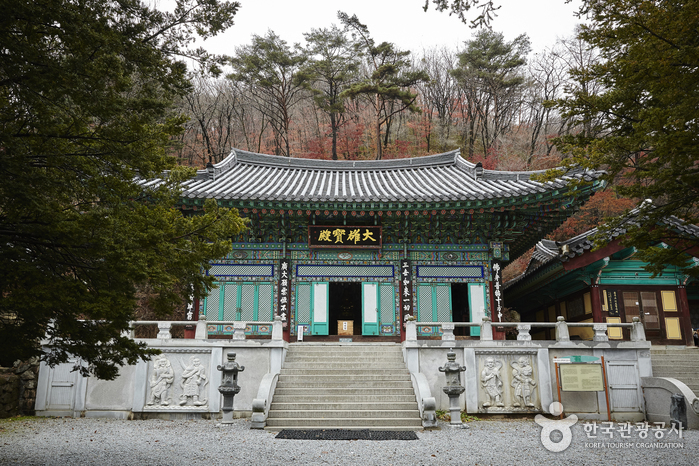
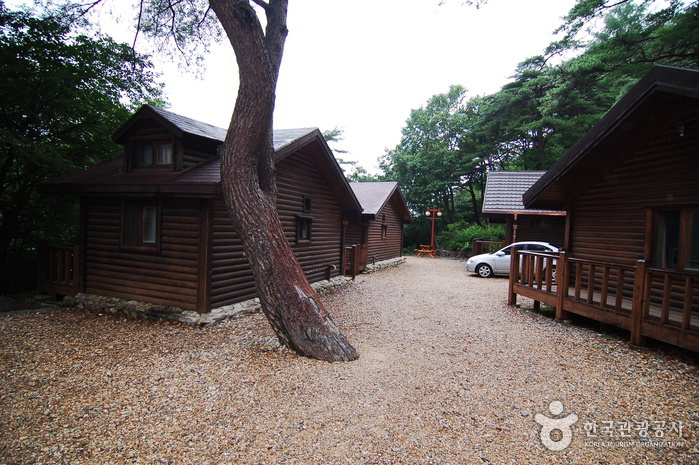
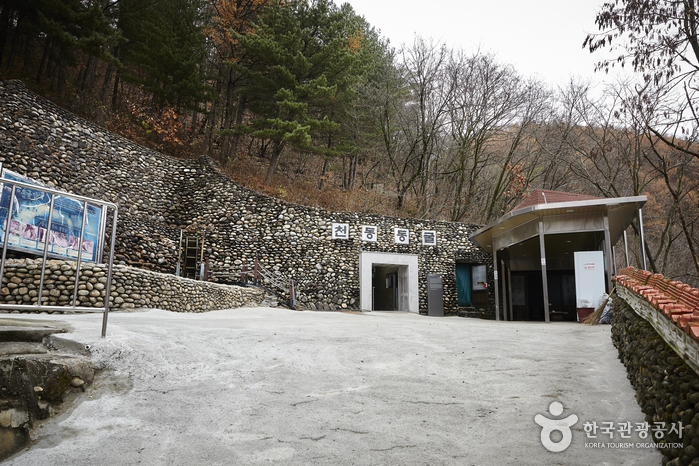

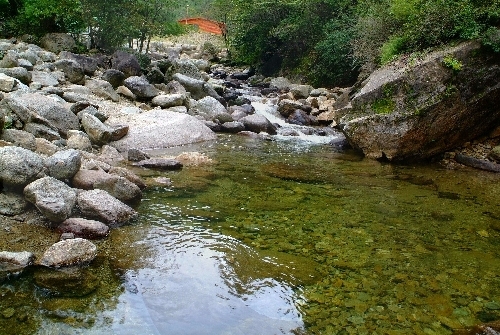
![Temple Buseoksa [Patrimoine mondial de l'UNESCO] (부석사)](http://tong.visitkorea.or.kr/cms/resource/22/2654222_image2_1.jpg)
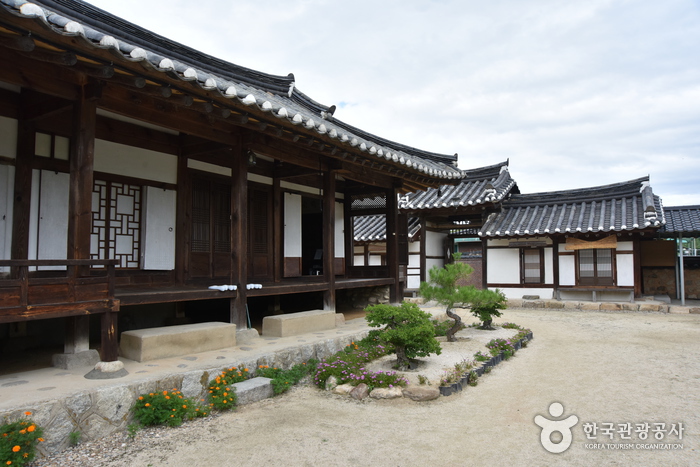
![The Namho house [Korea Quality] / 남호구택 [한국관광 품질인증]](http://tong.visitkorea.or.kr/cms/resource/90/2626090_image2_1.jpg)
 Français
Français
 한국어
한국어 English
English 日本語
日本語 中文(简体)
中文(简体) Deutsch
Deutsch Español
Español Русский
Русский